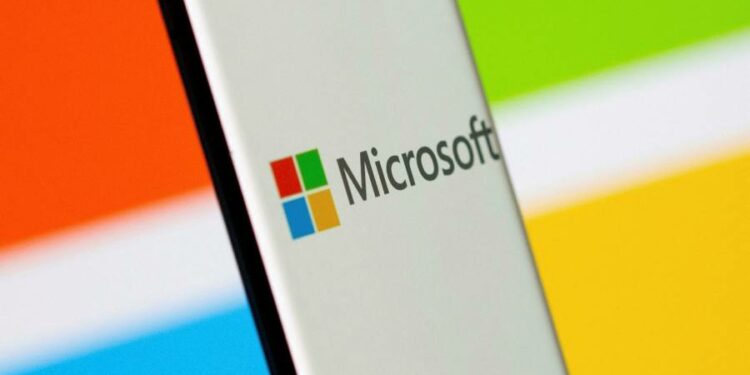US stocks rose on Wednesday, helped by strong gains for Microsoft, as a bullish forecast from the tech group lifted sentiment following sharp drops on Wall Street in the previous session.
The S&P 500 added 0.6 per cent and the technology-heavy Nasdaq Composite rose 1 per cent, after declines of 2.8 per cent and almost 4 per cent respectively on Tuesday.
Google parent Alphabet reported a $1.5bn drop in quarterly profits following the closing bell on Tuesday, citing a slowdown in European advertising spending at its YouTube division, driven by Russia’s invasion of Ukraine.
But at the same time, Microsoft topped analysts’ expectations for revenue and earnings in the latest quarter, with chief executive Satya Nadella predicting that tech spending would remain strong even if economic growth slowed.
Microsoft, which has a market value of $2tn, added more than 5 per cent after the open on Wednesday, while Alphabet fell 2.7 per cent.
Ahead of this earnings season, with Apple and Amazon yet to report results, some investors had hoped the dominance of big tech groups would secure their finances and relatively high valuations against the economic pressures of the war, and the impact of surging inflation on household finances.
“This sector was priced for perfection and set up to fail,” said Julian Howard, lead investment director for multi-asset solutions at fund manager GAM. “Anything that is short of a really good [earnings] beat is going to be severely punished by the market.”
Europe’s regional Stoxx 600 share index was up 0.5 per cent in afternoon trading, having dropped almost 1 per cent earlier in the day. Exporters were helped by the euro hitting a fresh five-year low against the dollar of below $1.06 on bets of aggressive interest rate rises in the US.
The dollar index, which measures the greenback against six other currencies, rose 0.7 per cent to its highest point since 2017.
Germany’s Dax edged 0.2 per cent higher and London’s FTSE 100 added 0.2 per cent. But, implying further turbulence ahead, an index of the expected volatility of large-cap European stocks rose to a reading of 32, far above its long-run average of about 20, as traders struggled to assess the economic outlook against a backdrop of weak market sentiment.
In government debt markets, the yield on the US 10-year Treasury note slipped 0.02 percentage points lower to 2.75 per cent, following a bout of haven buying earlier in the week. The yield on the policy-sensitive two-year note fell 0.06 percentage points to 2.52 per cent. Bond yields fall as their prices rise.
US Federal Reserve chair Jay Powell has signalled the central bank is poised for a string of rate rises to battle surging consumer prices. But strict social restrictions in China, stemming from the nation’s zero Covid-19 policy, have muddled investors’ inflation forecasts.
“Markets are trying to sort out the economic consequences of lockdowns in China,” said Gergely Majoros, investment committee member at Carmignac, citing the risk of snarled up manufacturing supply chains exacerbating inflationary pressures from Russia’s invasion of Ukraine, which has boosted fuel and food prices.
But Chinese authorities, having permitted the nation’s tightly controlled currency to weaken — the renminbi has dropped 3.4 per cent against the dollar this month — would also lower the cost of importing goods from the world’s workshop, which “could be deflationary”, Majoros said.
Brent crude, the international oil benchmark, fell 1.1 per cent per cent to $104 a barrel. Gas futures linked to TTF, Europe’s wholesale natural gas price, were up almost 10 per cent to €107.75 per megawatt hour after surging by a fifth earlier in the day, after Russia’s Gazprom froze supplies to Poland and Bulgaria.











